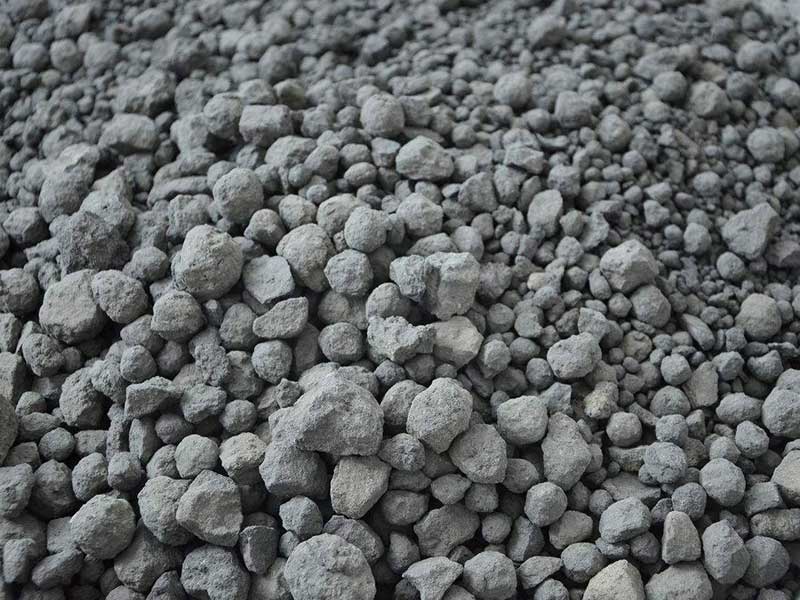Cement Clinker

Cement clinker is a solid material produced in the manufacture of Portland cement as an intermediary product. Clinker occurs as lumps or nodules, usually 3 millimetres (0.12 in) to 25 millimetres (0.98 in) in diameter. It is produced by sintering (fusing together without melting to the point of liquefaction) limestone and aluminosilicate materials such as clay during the cement kiln stage.
Composition and preparation :
The Portland clinker essentially consists of four mineral phases: two calcium silicates, alite (Ca3Si) and belite (Ca2Si), along with tricalcium aluminate (Ca3Al) and calcium aluminoferrite (Ca4AlFe). These main mineral phases are produced by heating at high temperature clays and limestone.[1]
Portland cement clinker is made by heating a homogeneous mixture of raw materials in a rotary kiln at high temperature. The products of the chemical reaction aggregate together at their sintering temperature, about 1,450 °C (2,640 °F). Aluminium oxide and iron oxide are present only as a flux to reduce the sintering temperature and contribute little to the cement strength. For special cements, such as low heat (LH) and sulfate resistant (SR) types, it is necessary to limit the amount of tricalcium aluminate formed. The major raw material for the clinker-making is usually limestone mixed with a second material containing clay as a source of alumino-silicate. An impure limestone containing clay or silicon dioxide (SiO2) can be used. The calcium carbonate (CaCO3) content of these limestones can be as low as 80% by weight. The second raw material (materials in the rawmix other than limestone) depend on the purity of the limestone. Some of the second raw materials used are: clay, shale, sand, iron ore, bauxite, fly ash and slag. The clinker and its hydration reactions are characterized and studied in detail by many techniques, including calorimetry, strength development, X-ray diffraction, scanning electron microscope and atomic force microscopy.[2]
Uses:
Portland cement clinker (abbreviated k in the European norms) is ground to a fine powder and used as the binder in many cement products. A small amount of gypsum (less than 5 wt.%) must be added to avoid the flash setting of the tricalcium aluminate (Ca3Al2O6), the most reactive mineral phase (exothermic hydration reaction) in Portland clinker. It may also be combined with other active ingredients or cement additions to produce other types of cement including, following the European EN 197-1 standard:[3]
Clinker, if stored in dry conditions, can be kept for several months without appreciable loss of quality. Because of this, and because it can be easily handled by ordinary mineral handling equipment, clinker is internationally traded in large quantities. Cement manufacturers purchasing clinker usually grind it as an addition to their own clinker at their cement plants. Manufacturers also ship clinker to grinding plants in areas where cement-making raw materials are not available
